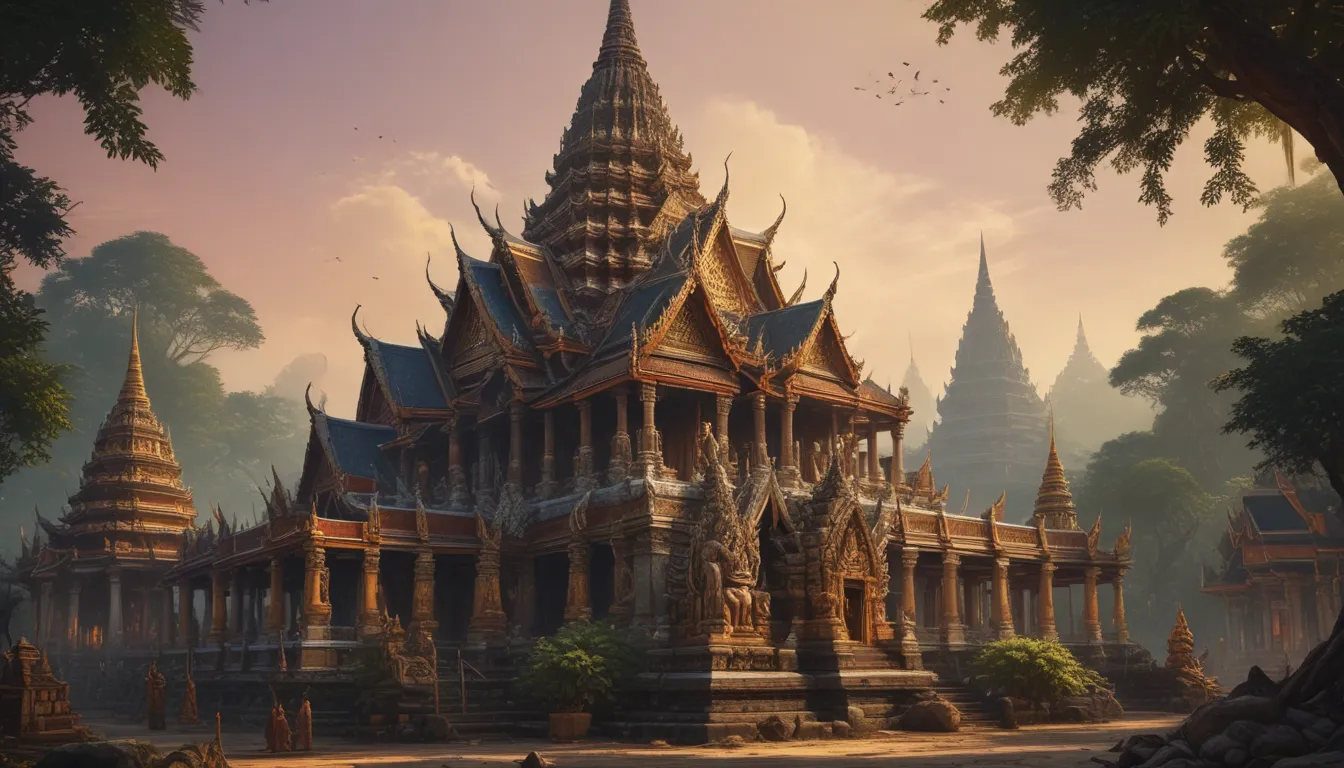The images in our articles may not match the content exactly. They are used to grab your attention, not to show the exact details in the text. The images complement the text but do not replace it.
Thailand’s temples, also known as Wats, are not just places of worship; they are vibrant centers of culture, history, and faith. These sacred sites hold a significant place in Thai society, serving as community hubs, educational centers, and architectural marvels. With over 40,000 temples spread across the country, each one offers a unique insight into the rich tapestry of Thai culture and the enduring legacy of Buddhism. Let’s delve deeper into the world of Thai temples and uncover some fascinating facts that showcase the beauty and diversity of these spiritual sanctuaries.
Unveiling the Essence of Thai Temples
Thai temples, or Wats, are much more than just religious sites. They serve as pillars of the community, embodying Thailand’s cultural heritage and artistic brilliance.
-
Wat Phra Kaew: Located in Bangkok, this temple houses the revered Emerald Buddha, carved from a single block of jade. It is considered the most sacred Buddhist temple in Thailand.
-
Education: Apart from their spiritual significance, Thai temples play a crucial role in education. Many temples run schools and offer free education to children, particularly in rural areas.
The Architectural Splendor of Thai Temples
The architecture of Thai temples is a blend of influences from various traditions, resulting in diverse and intricate structures.
-
Stupas and Chedis: These mound-like structures contain Buddhist relics and vary in shape and design from one temple to another.
-
Prangs: Tall tower-like structures symbolizing Mount Meru, the center of the universe in Buddhist and Hindu cosmology.
-
Ubosot: Ordination halls, considered the most sacred areas in temples, where monks get ordained and important religious ceremonies are held.
The Integral Role of Temples in Thai Society
Thai temples are deeply ingrained in the fabric of society, serving as more than just places of worship.
-
Community Centers: Temples provide meals and shelter to the poor, host community gatherings, and preserve traditional arts and crafts.
-
Monks: Monks play a significant role in offering spiritual guidance and education to the community, as well as being involved in community service and mediation.
Festivals and Celebrations at Thai Temples
Thai temples are vibrant hubs of cultural and religious festivities, each with its unique set of traditions and ceremonies.
-
Loy Krathong Festival: A celebration honoring the water goddess where people float decorated baskets in rivers and lakes.
-
Songkran: The Thai New Year celebration involves traditional water blessings and merit-making activities at temples.
-
Ordination Ceremony: A significant event where young men become monks, often held in the temple’s ubosot.
Conservation, Tourism, and Unique Features
With the rise in tourism, Thai temples have gained international fame, attracting visitors from around the world.
-
Conservation Efforts: There are ongoing efforts to preserve the historical and cultural integrity of temples while balancing the needs of tourism.
-
Wat Pho: Home to the giant reclining Buddha and a center for traditional Thai massage, Wat Pho is among Bangkok’s most visited temples.
-
Unique Features: Each Thai temple has its unique characteristics, reflecting the diverse religious and cultural landscape of Thailand.
Embracing the Spiritual Essence of Thailand
Thai temples, with their golden spires and intricate artwork, serve as serene retreats for meditation and reflection, embodying Thailand’s faith and community spirit.
-
Giving Alms: The tradition of giving alms to monks during tak bat reinforces the bond between the monastic community and laypeople.
-
Cultural Significance: Temples play a crucial role in major life events, offering spiritual guidance and support to the community.
-
Diversity of Design: From royal temples to village wats, the variety in temple designs showcases the rich tapestry of Thai culture.
A Glimpse into Thailand’s Spiritual Heritage
Exploring Thai temples offers more than just a visual treat; it is a journey through Thailand’s rich spiritual tapestry and cultural heritage. These sacred sites serve as gateways to understanding the heart and soul of the Thai people, embodying the enduring power of faith and the timeless allure of Thai heritage.
Conclusion
Thai temples stand as symbols of Thailand’s rich cultural tapestry and spiritual devotion. They are not just places of worship but vibrant centers of community, education, and artistry. As you immerse yourself in the world of Thai temples, remember that each temple has its unique story to tell, reflecting the beauty and diversity of Thai culture. Whether you are a history enthusiast, a spiritual seeker, or an admirer of beauty, Thai temples have something special to offer, inviting you to explore the heart and soul of Thailand’s spiritual heritage.






